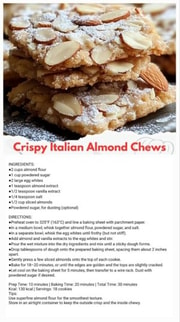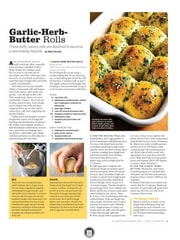Australians could save big! Here’s which banks are passing on the latest RBA rate cut
By
Maan
- Replies 4
Interest rate changes often ripple through the economy, affecting everything from household budgets to long-term investments.
A recent decision by Australia’s central bank has sparked discussion, relief, and a fair bit of speculation about what lies ahead.
Here’s what’s unfolding—and what it could mean for your wallet in the months to come.
A shift in interest rates grabbed national attention this week as the Reserve Bank of Australia (RBA) announced a cut to the cash rate, bringing it to its lowest level in two years.
Following its monetary policy board’s two-day meeting, the RBA revealed on Tuesday that the official cash rate had dropped to 3.85 per cent.
Treasurer Jim Chalmers described the decision as ‘welcome relief’ for Australians managing mortgage repayments.
The move came in the wake of a slowdown in inflation, with headline inflation recorded at 2.4 per cent for the March quarter.
The RBA’s preferred measure, underlying inflation, which excludes volatile items, registered at 2.9 per cent—at the upper end of the central bank’s target band of 2–3 per cent.
Despite acknowledging a significant decline in inflation from its 2022 peak, the board flagged that headline inflation may rise again in the coming year.
It attributed this anticipated increase to the expiration of temporary measures, such as energy bill rebates.
However, the RBA stated that it expected underlying inflation to ease and settle around the midpoint of its target range by July 2027.
The board also maintained a cautious tone about the broader economic outlook.
It pointed to a range of risks, including the impact of US tariffs, geopolitical tensions, and a slowdown in domestic economic activity.
Even so, it said the ‘risks to inflation have become more balanced’, and concluded a rate cut was justified as inflation was projected to remain within target.
Financial comparison site Canstar estimated that borrowers could see noticeable savings if lenders passed the rate cut on.
A household with a $500,000 mortgage would save about $76 per month, while a $600,000 loan would bring a $91 saving.
Those repaying a $750,000 mortgage would be $114 better off each month, and borrowers with $1 million owing could save around $152.
Major banks and lenders announced when they would apply the rate cut to their products.
Macquarie Bank moved first, implementing the change from 23 May.
Commonwealth Bank, NAB, ANZ, Bankwest, Suncorp and People’s Choice Credit Union followed suit from 30 May.
AMP confirmed its update would take place on 2 June.
Westpac, ING, RACQ Bank, Bank SA, Bank of Melbourne and St George scheduled their changes for 3 June.
Pepper Money would implement the cut on 5 June, with Homeloans following on 11 June.
Online lenders Athena and Unloan passed the rate cut on immediately.
The Commonwealth Bank projected the cash rate would fall further, predicting it would hit 3.35 per cent by the end of 2025.
ANZ and Westpac shared that outlook, though ANZ forecasted the drop by August and Westpac tipped it would come by year’s end.
NAB had previously anticipated a 0.50 per cent cut in May, which did not materialise, and had yet to revise its forecast.
The RBA was next due to meet on 7–8 July.

With interest rates on the move and inflation still a concern, how do you think this decision will impact your household budget? Let us know your thoughts in the comments.
A recent decision by Australia’s central bank has sparked discussion, relief, and a fair bit of speculation about what lies ahead.
Here’s what’s unfolding—and what it could mean for your wallet in the months to come.
A shift in interest rates grabbed national attention this week as the Reserve Bank of Australia (RBA) announced a cut to the cash rate, bringing it to its lowest level in two years.
Following its monetary policy board’s two-day meeting, the RBA revealed on Tuesday that the official cash rate had dropped to 3.85 per cent.
Treasurer Jim Chalmers described the decision as ‘welcome relief’ for Australians managing mortgage repayments.
The move came in the wake of a slowdown in inflation, with headline inflation recorded at 2.4 per cent for the March quarter.
The RBA’s preferred measure, underlying inflation, which excludes volatile items, registered at 2.9 per cent—at the upper end of the central bank’s target band of 2–3 per cent.
Despite acknowledging a significant decline in inflation from its 2022 peak, the board flagged that headline inflation may rise again in the coming year.
It attributed this anticipated increase to the expiration of temporary measures, such as energy bill rebates.
However, the RBA stated that it expected underlying inflation to ease and settle around the midpoint of its target range by July 2027.
The board also maintained a cautious tone about the broader economic outlook.
It pointed to a range of risks, including the impact of US tariffs, geopolitical tensions, and a slowdown in domestic economic activity.
Even so, it said the ‘risks to inflation have become more balanced’, and concluded a rate cut was justified as inflation was projected to remain within target.
Financial comparison site Canstar estimated that borrowers could see noticeable savings if lenders passed the rate cut on.
A household with a $500,000 mortgage would save about $76 per month, while a $600,000 loan would bring a $91 saving.
Those repaying a $750,000 mortgage would be $114 better off each month, and borrowers with $1 million owing could save around $152.
Major banks and lenders announced when they would apply the rate cut to their products.
Macquarie Bank moved first, implementing the change from 23 May.
Commonwealth Bank, NAB, ANZ, Bankwest, Suncorp and People’s Choice Credit Union followed suit from 30 May.
AMP confirmed its update would take place on 2 June.
Westpac, ING, RACQ Bank, Bank SA, Bank of Melbourne and St George scheduled their changes for 3 June.
Pepper Money would implement the cut on 5 June, with Homeloans following on 11 June.
Online lenders Athena and Unloan passed the rate cut on immediately.
The Commonwealth Bank projected the cash rate would fall further, predicting it would hit 3.35 per cent by the end of 2025.
ANZ and Westpac shared that outlook, though ANZ forecasted the drop by August and Westpac tipped it would come by year’s end.
NAB had previously anticipated a 0.50 per cent cut in May, which did not materialise, and had yet to revise its forecast.
The RBA was next due to meet on 7–8 July.
Key Takeaways
- The RBA cut the cash rate to 3.85 per cent—its lowest in two years—amid easing inflation and economic uncertainty.
- Treasurer Jim Chalmers called the move ‘welcome relief’ as households with mortgages could save up to $152 a month.
- Banks including Commonwealth, ANZ, Westpac, and online lenders confirmed they would pass on the rate cut starting late May through June.
- The cash rate is expected to fall further to 3.35 per cent by the end of 2025, with the next RBA meeting scheduled for 7–8 July.
With interest rates on the move and inflation still a concern, how do you think this decision will impact your household budget? Let us know your thoughts in the comments.







